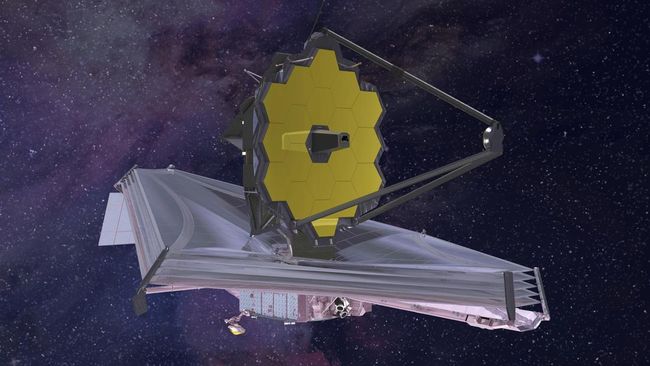Telescope James Webb’s Outer Space captures the spectral pillar of creation by means of mid-infrared (MIRI) light.
For information, the pillar of creation is a cloud of hydrogen gas and dust in the constellation Serpent, about 6,500 light-years from Earth.
Quoted by CNNLast week, the space observatory showed a near-infrared view of the iconic tower, which is made up of interstellar dust and gas and the glow of young stars.
The three-dimensional structure is about 5 light years long. Where, a light year is about 6 trillion miles.
In Webb’s latest image, the iconic feature is captured in mid-infrared light. Then a gray, velvety dust was also seen that resembled a ghostly figure leaping across the cosmos.
The stars were covered in dust, but some of them pierced the darkness with a red light.
It was a new perspective on the celestial scene that was first observed by the Hubble Space Telescope in 1995 and again in 2014.
Infrared light is invisible to the human eye. However, Webb can reveal hidden aspects of the universe. The new image, taken by Webb’s Mid-Infrared Instrument, or MIRI, captures even more detail on the structure of the powder and pillars.
Although thousands of stars have formed inside the pillars and usually shine as the main feature, their starlight cannot be detected in mid-infrared light.
On the contrary, MIRI only observes the younger stars that have not yet lost their dusty shells and shine like the rubies in the image.
Meanwhile, the blue star in the same spot represents an older star that has shed a layer of gas and dust.
The capabilities of MIRI Webb are capable of detecting the details of gas and dust pillars and surrounding areas. In the background of the image, areas of dense dust are represented in gray, while red areas such as the horizon are where the dust is coolest and most diffuse.
Unlike many of Webb’s recent images, there are no background galaxies that glow in the background because their distant light cannot penetrate them.
The central infrared perspective on the Pillars of Creation will allow researchers to better understand the millions of years of star formation in these star nurseries.
Other telescopes, including the Spitzer Space Telescope, have observed pillars at various wavelengths of light. Each new look at the iconic landscape reveals a new look, greater detail and precise measurements of gas, dust and stars within, allowing for a better understanding of this beautiful region.
(yla / wow)


